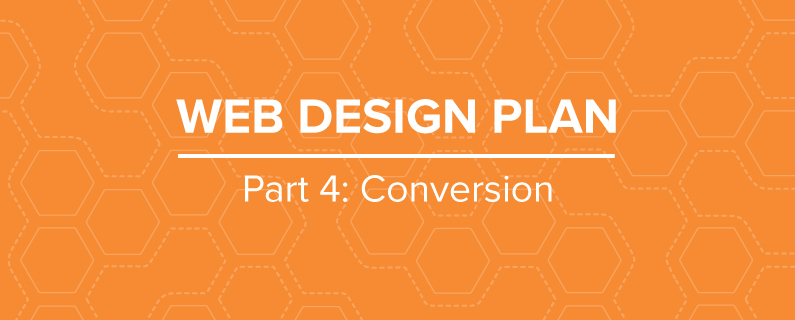 Conversion drives your sales process
Conversion drives your sales process
Your website should be the hub of your marketing activity but your goal isn’t just to drive people to your site. Don’t get me wrong, web traffic is important. Unfortunately, businesses often put too much emphasis on driving traffic and not enough on conversion, the process of moving prospects through to the next step in the sales cycle. So how do you build a website which converts visitors into prospects?
Give website visitors something to do when they arrive.
If your website is still simply an online brochure, you are missing a tremendous opportunity to get visitors to interact. You want them to click, buy, call, download or watch something which gets them involved in your sales cycle. Other options might include leaving a comment, downloading a report, viewing a video, listening to a testimonial, filling out a survey, or searching frequently asked questions.
Why is this so important? Without conversion points, you will never know who has visited your website or what they were interested in. Let’s face it, in the world of web design fashion, conversion is the new black.
Pick the right first step
While you may want a potential client to request a quote or schedule an appointment that may be too big a leap for a first time visitor to your website. Asking for too much information or jumping right into sales mode may seem presumptuous. So be realistic when you present your first step. Offer a chance to browse your portfolio or gallery, review a case study or a list of frequently asked questions, sign up for your newsletter or download a report. Once they do that, they will be more confident in your experience and ability to handle their problem.
Part of picking the right first step is picking one step. We have all had the experience of feeling accosted as soon as we arrive on a website with offers subscribe to the newsletter, add the blog to your RSS feed, get in touch, stay in touch, chat now, request a demo and so much more.
Presenting too much too soon makes you seem a little desperate, and kind of annoying. It is overwhelming for the visitor who doesn’t know what to do first and may just run back to Google to find a less cluttered site with one clear choice. Yes, you want to convert people, but let them understand why they should stay in touch with you and how what you are offering meets their needs.
Every page on your website is a conversion opportunity.
Your objective should be to keep visitors on your website as long as possible as they browse and find more and more interesting and compelling information. Instead of presenting multiple or competing offers which confuse visitors, create one relevant next step and a clear path to a conversion form on each page.
Only ask for what you need
Serious prospects will give you their email in exchange for information. This is fairly standard across the Internet. However, when you ask for full name, mailing address, email address, work phone, cell phone, blood type…it’s all too much. As you design your conversion form, think about what’s really important. The more information you ask for, the fewer people will complete the process.
If you keep the interaction barrier low, you will earn the right to come back and ask for more information later.
Optimize your landing page.
While you can convert people from any page on your website, specific landing pages can increase your conversion results. Create calls to action throughout your site which drive visitors to a single purpose page. Unlike other pages on your site, these pages are designed to be the last stop on the visit.
- There is only one offer
- Graphics should not take visitors anywhere else on the site
- Eliminate the site navigation, he purpose of this page is to get someone to fill out a form and take the next step in your process
- Consider adding video to give visitors a compelling reason to fill out the form
- Make sure the page is optimized for mobile
Learn more about designing and testing your landing pages.
Follow Up!
Once someone takes the time to comment or download a form, be sure you have a way to keep the conversation going. Monitor your blog for new comments, set up an auto response to acknowledge questions and comments. Consider developing a standard email campaign to send to prospects after they have demonstrated an interest in a particular topic.
The Tools
This is all good in theory, but how do you build landing pages, conversion forms and follow up campaigns? There are lots of good tools but these are the ones we use:
Landing page construction: WordPress with the Divi page builder – This tool allows us to create unique templates and spin up custom landing pages in minutes. WordPress is free, but Divi which is produced by Elegant Themes can be purchased for a $69/year subscription.
Conversion form construction: Bloom for simple sign ups which integrate directly with email tools. This is part of the Elegant Themes bundle so if you are subscribing to Divi, this comes along for free.
We also like Gravity Forms for more complex contact forms. Annual subscriptions for one site run $39/year. For that price you can build an unlimited number of forms for the same site.
Autoreponse and email campaigns: Constant Contact – This is the granddaddy of email marketing tools. It is simple to use, full featured and reasonably priced.
Ready to start working on your conversion program? Give us a call
